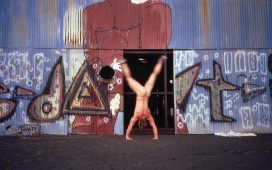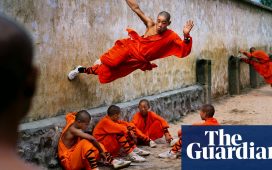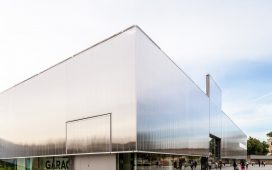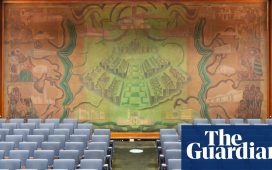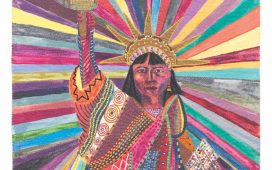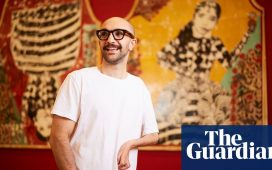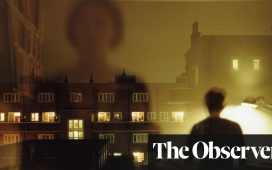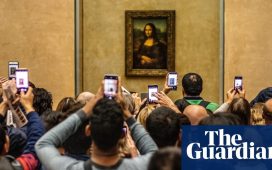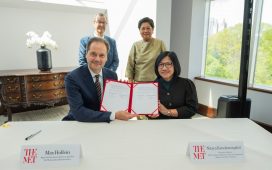In the summer of 2023, I was living in Qaanaaq, Greenland, one of the most northern cities in the world. It’s a tundra: there are no plants, it barely rains and, in the summer months, there are 24 hours of sun. During the night, the weather is calmer and more colourful – by day, it’s hardcore and very bright. This was taken just before midnight. I could hear kids playing tag outside, then they got tired and lay down. I went out and asked if I could take a photo. We have a lot of nostalgia in our culture in Greenland, and this photograph captures that feeling: it is the middle of summer, but it has the look of spring. Greenland in spring is unlike any other place. Since the sun is not visible in the winter, when spring comes it brings life back. That time of total darkness is very spiritual.
The whole town knew I was taking photographs, but the fact that they’re now going be on show at the Danish Pavilion of the Venice Biennale isn’t so interesting to them – it’s too far away. My work has always been about Greenland’s history, traditions and everyday life, such as hunting. I was given permission to take photos with the hunters, but it was difficult to shoot where they work because the ice was melting.
I’d been thinking about going to Qaanaaq for years as my name originates in the town. I wanted to take my name home, to understand its meaning and its spirit. That is how this series Soon Will Summer Be Over began.
Qaanaaq is one of the last places in Greenland to have been colonised by Denmark, in 1937. At that time, they were still living exactly as they had in the old days, a traditional life, with shamans and hunters. We Greenlandic people call ourselves Inuit, which really means human. We use a drum called “the one to take you to different skies”, and when we play it we connect to different worlds and meet other creatures. That is how we understand we are human. It is hard to explain, but this is how Greenlandic people work. Our language is very visual, too.
Photographs come naturally to me. I follow my instincts. To me, a good photo is an honest photo. I work with three different cameras. This was taken with a point and shoot. In the same series, I also worked with a camera from the 1940s, which requires more planning and preparation. When I present my photography, I try to show it in an Inuit way, in terms of how the works are hung and represented, what materials are used, all adapting to the environment. We are very good at adapting to places.
I lived for a time in New York and believed I was going to stay there for many years. But I quickly realised most of the photographs I wanted to take were in Greenland, so I went home and started capturing the Greenlandic lifestyle. When I moved back from New York, where it is so busy and everyone walks very fast, I understood the meaning of walking slowly.
Art culture is a western concept. When we make harpoons and decorate them with depictions of animals, it is not to make them look good – it is because we hope the harpoon will get that animal. A lot of our traditions are about hope. Living in Greenland is not easy – we need a lot of hope!
When people from home see my photographs and feel homesick, that’s a sign they like my work. They feel something familiar in what they see. That is what I want to achieve.
Inuuteq Storch’s CV
Born: Sisimiut, Greenland, 1989
Trained: Self-taught.
Influences: “Everyday life. Qunerseeq Rosing, John Møller, Richard Billingham, Jacob Aue Sobol, my family.”
High point: “Being in east and north Greenland.”
Low point: “The first time I couldn’t take any photos due to being creatively exhausted – I thought I would never be good at taking photos for the rest of my life.”
Top tip: “Be honest and be excited.”
